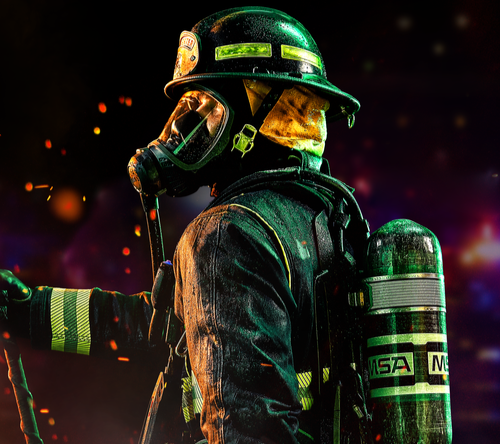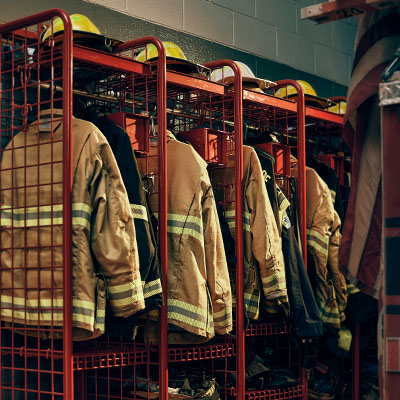In a recent meeting of the technical committee responsible for revision of NFPA 1851: Standard on Selection, Care, and Maintenance of Protective Ensembles for Structural Fire Fighting and Proximity Fire Fighting, extensive discussion revolved around proposing modifications in how turnout clothing should be cleaned and, in particular, verified for removal efficiency of harmful contaminants.
Changes have been recommended for moving forward with more frequent advanced cleaning of turnout clothing (At this stage, the changes have only been proposed. Ratification of the changes does not occur until the committee has formally voted on the overall standard.)
Whereas the current edition of NFPA 1851 prescribes advanced cleaning to be performed at least annually, the new edition, if accepted, will require advanced cleaning at least twice a year. This means that those departments that follow NFPA 1851 will be conducting more frequent cleaning of their gear than in the past several years.

AN EMPHASIS ON FREQUENT FIREFIGHTER GEAR CLEANING
It must be pointed out that the NFPA 1851 standard has always indicated that firefighter clothing and equipment should be cleaned whenever it becomes soiled or contaminated. That requirement exists both in the current edition, as well as in the new edition.
What is changing for the 2019 edition of NFPA 1851 is the fact that more frequent advanced cleaning is being prescribed for turnout clothing in general. Part of this change involves the promotion of language which indicates that exposure to the products of combustion represents contamination. Therefore, whether visibly soiled or not, the standard will be dictating advanced cleaning of clothing that is worn on the fireground.
In addition to the increased frequency of advanced cleaning, new proposed requirements for NFPA 1851 now refer to “preliminary exposure reduction” in replacing routine cleaning. Preliminary exposure reduction encompasses activities on the fireground to begin the decontamination process, including:
- Either wet rinse or dry brushing of the clothing exterior while the firefighter is still on air.
- Isolation and bagging of the firefighter gear.
- Separate transport of the firefighter gear away from the apparatus cab interior or personal areas of the vehicle back to the station or cleaning facility.
Needless to say, these practices impose a serious demand on fire departments for providing both the resources to carry out the preliminary exposure reduction actions as well as the spare gear required to maintain the operational readiness of the specific company involved. It is recognized that such practices will not always be possible or practical, and language has been proposed in the standard to allow for some accommodations for these factors.
Still, the trend is now in place for recognition that cleaning has to be much more thorough and frequent in order to prevent gear from becoming a continuing hazardous substance source to firefighters.
RAMIFICATIONS OF MORE FIREFIGHTER GEAR CLEANING
If frequent cleaning is to become the norm, then implications arise as to the impact on both the gear and the departments that choose to provide this level of cleaning. For years, many departments have struggled to outfit their members with two sets of gear. The push for two sets has been based on the argument that as one set becomes soiled or contaminated, an extra set is needed to prevent taking the unit out of service.
This two-set approach has been instrumental in ramping up the ability to more frequently clean gear and having fire department members in cleaner gear. Yet, for some departments, a two-set approach may not be the solution or even possible within their available resources. This can occur because two sets are simply insufficient for a relatively busy station, or this simply creates a financial burden that a department cannot overcome.
In addition to the availability of clean gear, other questions arise even as to the ability to clean. Generally, the focus has always been on garments and, to a lesser extent more recently, hoods. This is because these items can be cared for much like regular apparel.
Helmets, gloves and footwear are generally more frequently ignored. Typically, these items cannot be machine washed and sometimes are never cleaned after a fire incident. Yet, it is well recognized that these items become just as dirty, if not more so than the full garments.
Thus, the ability to clean these items effectively remains a significant variable as the trend for frequent cleaning is increased. For example, the portions of the helmet suspension that come in contact with the firefighter and the ear covers are probably not cleaned after most fires. The ability to remove these items varies significantly among manufacturers and types of products. For gloves and footwear, there are significant limitations to the ability to clean these ensemble elements uniformly.
CLEANING VERIFICATION AND ENSEMBLE INTEGRITY
Even when it is possible to implement more frequent cleaning, there is still the issue of how cleaning can affect the long-term protective performance of the clothing and equipment. As anyone who washes their own clothing knows, regular cleaning can break down clothing over time. In the case of turnout clothing, only rudimentary controls are built into NFPA 1971: Standard on Protective Ensembles for Structural Fire Fighting and Proximity Fire Fighting, for making this assessment.
For most performance requirements as a prelude to testing, only five cycles of laundering are applied for garments. For one particular property – moisture barrier effectiveness – that number is increased to only 10 washing and drying cycles. Thus, if the expectation is that clothing is cleaned after every working fire, then some gear can be subjected to up to 25 cycles a year.
Many manufacturers currently indicate that clothing generally has a service life, ranging from five to seven years for moderately busy department. While it is recognized that many components are indeed quite rugged and durable, there remains some uncertainty as to whether frequent cleaning will cause some degradation of clothing and equipment performance.
CHALLENGES IN DECONTAMINATION FIREFIGHTER GEAR
The Fire Protection Research Foundation has conducted a study evaluating how well current procedures remove contaminants. Among the findings is the simple adage that materials that are easy to contaminate may also be the same materials that are easy to decontaminate. Similarly, materials that are hard to contaminate are also hard to decontaminate. This preliminary finding was highlighted by the fact that finishes used on outer shell materials, while relatively outstanding in preventing liquid absorption, actually also may make it difficult to remove some contaminants once absorption does occur.
If you combine the above finding with the established knowledge that most ensembles only partially attenuate the amount of contaminant penetration into the clothing, then the problem of contamination control becomes all the more difficult to address, even with effective cleaning.
In reality, firefighters need to have clean protective equipment whenever they enter a hazardous environment where exposure will occur and further need to remove that gear as soon as they leave the emergency scene to minimize their overall exposure. This type of thinking only reinforces how closely structural firefighting is starting to resemble hazardous materials response.
EMERGING NEW PATHWAYS FOR PPE IN CONTAMINATION CONTROL
If all the information presented in this column is taken collectively, then the current system of PPE design, materials, cleaning and decontamination may not be the best solution for managing firefighter exposure to contaminants. To address this problem more holistically, it may be necessary to think completely outside the box with respect to existing practices.
Turnout clothing availability may be better served by clothing that is maintained by the department and issued as needed, meaning that gear is no longer specific to the individual but to the organization. This approach in and of itself creates significant problems such as ensuring appropriately sized ensemble elements for each firefighter, but it does provide a basis for ensuring that clean items are provided for each incident to the firefighter. Such practices are already being employed for protective hoods, albeit a much simpler item of protective clothing.
There may become a day when the hazards being as significant as they are point towards either disposable protective clothing or disposable covers on existing protective clothing to minimize the impact of contamination. This also introduces as many problems as it does solutions because ease of donning and maintaining comfort are difficult to attain.
What is clear from these issues is that conventional approaches probably will not provide long-term solutions and therefore other forms of technology, perhaps borrowed from other industries and adapted for the fire service, or altogether unique designs and techniques, should be considered to address the minimization of continued firefighter exposure to carcinogenic and other hazardous contaminants.







